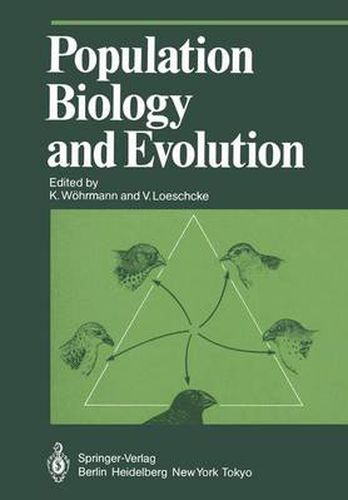Readings Newsletter
Become a Readings Member to make your shopping experience even easier.
Sign in or sign up for free!
You’re not far away from qualifying for FREE standard shipping within Australia
You’ve qualified for FREE standard shipping within Australia
The cart is loading…






This title is printed to order. This book may have been self-published. If so, we cannot guarantee the quality of the content. In the main most books will have gone through the editing process however some may not. We therefore suggest that you be aware of this before ordering this book. If in doubt check either the author or publisher’s details as we are unable to accept any returns unless they are faulty. Please contact us if you have any questions.
This volume contains the papers presented at a symposium on popula tion biology sponsored by the Deutsche Forschungsgemeinschaft. It was . held at the guest house of the University of Ttibingen at Oberjoch on May 15-19, 1983. Prior to this conference a small group of European biologists had met in Berlin (June 1981) and Pavia (September 1982) to discuss re search problems on the borderline between population genetics and evolutionary ecology. From the contributions and discussions at these meetings it became evident that the unification of approaches to evolutionary problems in population genetics and evolutionary ecology has not yet been suc cessful and requires further efforts. It was the consensus that a larger symposium with international participation would be helpful to con front and discuss the different approaches to population biology in order to assess where we are now and where we should be going.
As a result an organizational committee was formed (F. Christiansen, S. Jayakar, V. Loeschcke, W. Scharloo, and K. W6hrmann) to iden tify topics that seemed, at least to them, to be fruitful in tackling problems in population biology. Consequently, a number of colleagues were asked to participate in the meeting. We have divided this book into chapters corresponding to the eight topics chosen. The volume begins with the relation between genotype and phenotype and is followed by a chapter on quantitative genetics and selection in natural populations.
$9.00 standard shipping within Australia
FREE standard shipping within Australia for orders over $100.00
Express & International shipping calculated at checkout
This title is printed to order. This book may have been self-published. If so, we cannot guarantee the quality of the content. In the main most books will have gone through the editing process however some may not. We therefore suggest that you be aware of this before ordering this book. If in doubt check either the author or publisher’s details as we are unable to accept any returns unless they are faulty. Please contact us if you have any questions.
This volume contains the papers presented at a symposium on popula tion biology sponsored by the Deutsche Forschungsgemeinschaft. It was . held at the guest house of the University of Ttibingen at Oberjoch on May 15-19, 1983. Prior to this conference a small group of European biologists had met in Berlin (June 1981) and Pavia (September 1982) to discuss re search problems on the borderline between population genetics and evolutionary ecology. From the contributions and discussions at these meetings it became evident that the unification of approaches to evolutionary problems in population genetics and evolutionary ecology has not yet been suc cessful and requires further efforts. It was the consensus that a larger symposium with international participation would be helpful to con front and discuss the different approaches to population biology in order to assess where we are now and where we should be going.
As a result an organizational committee was formed (F. Christiansen, S. Jayakar, V. Loeschcke, W. Scharloo, and K. W6hrmann) to iden tify topics that seemed, at least to them, to be fruitful in tackling problems in population biology. Consequently, a number of colleagues were asked to participate in the meeting. We have divided this book into chapters corresponding to the eight topics chosen. The volume begins with the relation between genotype and phenotype and is followed by a chapter on quantitative genetics and selection in natural populations.